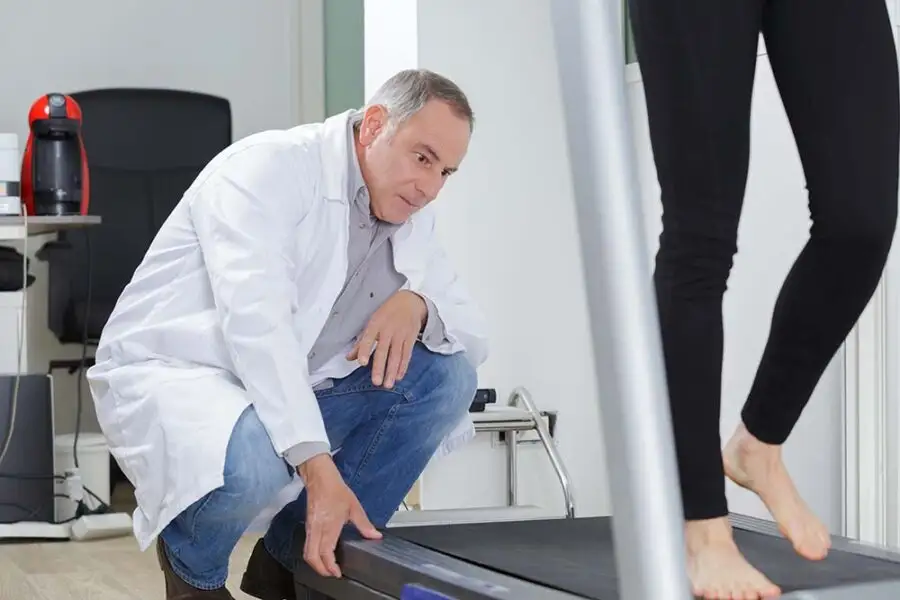
Each step we take engages a complex biomechanical process. The way our foot lands and lifts off the ground defines our foot strike. Understanding this motion helps us choose the right footwear and prevent pain in the feet, knees, and back. Whether you’re an avid walker or a casual runner, knowing your gait type can make a world of difference.
What Is Foot Strike?
Foot strike refers to how the foot touches the ground during walking or running. It starts with the heel contacting the ground and ends with the forefoot pushing off. This movement influences not only the feet but also the knees, hips, and spine. When misaligned, it can cause muscular compensations and pain across the kinetic chain.
A proper foot strike helps distribute body weight evenly and maintain balance. On the contrary, an abnormal gait often leads to discomfort, injuries, or chronic pain.
Types of Foot Strike
Pronation
Pronation involves the inward roll of the foot as it lands. This motion naturally absorbs shock. However, excessive pronation—where the foot rolls too far inward—may lead to:
- Uneven shoe wear, especially on the inner sole
- Ankle instability
- Knee misalignment
- lower back pain
This gait type is common and can be managed with the right shoes or custom orthotics.
Supination
Supination, also known as underpronation, is when the foot rolls outward upon landing. This results in less effective shock absorption and can lead to tension in the ankles, calves, and pain under the feet. It can cause:
- Heel and arch pain
- Tight calves
- Stress fractures
- Plantar fasciitis
Individuals with high arches are more likely to supinate. Choosing cushioned, flexible footwear helps counteract the impact.
Neutral Gait
A neutral gait occurs when the foot lands evenly without excessive inward or outward roll. It allows for:
- Optimal shock absorption
- Balanced body alignment
- Even muscle and joint load distribution
This is considered the most biomechanically efficient gait pattern.
How to Analyze Your Foot Strike at Home
Voici quelques méthodes simples pour repérer votre type de fouléeWant to identify your foot strike? Here are three simple methods:
- Check shoe wear: Inner sole wear = pronation; outer sole = supination.
- Wet footprint test: Wet your feet and step on brown paper. A full midfoot print indicates pronation, while a narrow print points to supination.
- Slow-motion video: Film your walk or run from behind to observe how your foot moves upon contact.
For a definitive assessment, consult a podiatrist. Clinical gait analysis uses pressure plates and video to precisely analyze your walking pattern.
Pain Conditions Linked to Foot Strike
This condition involves inflammation of the fascia—a thick band under the foot. Excessive pronation stretches the fascia excessively, causing microtears and intense pain, especially upon waking.
Heel Pain
Supinators absorb less impact, concentrating pressure on certain heel points. This often leads to inflammation and discomfort in the calcaneus (heel bone).
Tendonitis
Tendons like the Achilles or peroneals may suffer when gait mechanics are imbalanced. Repeated strain causes inflammation, stiffness, and pain.
Knee and Back Pain
Misaligned foot strike disrupts posture, leading to compensatory movements. This can manifest as lower back tension or patellofemoral pain syndrome in the knees. Correcting your gait may ease or prevent such issues.
The Benefits of Seeing a Podiatrist
A podiatrist is trained to assess and treat gait abnormalities. During a consultation, they may:
- Perform a clinical gait analysis
- Recommend footwear or orthotics
- Suggest targeted exercises
- Monitor long-term improvements
Seeking professional advice helps personalize your care and reduce injury risk.
FAQ: Common Questions About Foot Strike
Can I change my foot strike?
Yes. With consistent training, proper shoes, and sometimes orthotics, you can improve how your foot lands.
Does everyone have a neutral gait?
Not necessarily. Most individuals exhibit some degree of pronation or supination, depending on anatomy and activity level.
Why should I see a podiatrist for my gait?
They offer expert analysis and tailor solutions to reduce discomfort and enhance performance.
Can children have poor foot strike?
Yes. Early signs include toe-walking, in-toeing, or tripping frequently. A pediatric gait evaluation can prevent future issues.
Understanding your foot strike is key to preventing pain and enhancing mobility. If you walk or run regularly, don’t ignore the signals your body sends. A gait assessment can be the first step toward healthier movement.
Schedule a consultation with a podiatrist from PiedRéseau to get a evaluation and personalized advice.